
Prioritizing product announcements in a SaaS world
Main illustration: Kelly Carpenter
When everything you ship presents a marketing opportunity, there’s a tendency to announce everything. Don’t do it.
We’ve all heard the motto, “if you build it, they will come.” While it might be true for some, it’s not true for everyone.
Announce it, and more will come
The reality is great marketing, paired with great product, can equal more than the sum of its parts. I’m a big believer that marketing can amplify everything your product team builds. Why? Well, we’ve seen it first-hand at Intercom with more than 12X growth in new signups since we first invested in marketing in March 2014.

While they’re certainly not the only driver, product announcements have been a primary contributor to this new phase of growth for Intercom. It’s one of the reasons we treat everything we ship as a marketing opportunity.
Continuous shipping = endless opportunities
As our VP of Engineering Darragh would say, shipping is your company’s heartbeat. It touches all parts of your company, as do its benefits, and the behaviors it enables and encourages, like team morale, motivation, and momentum. It also presents marketing opportunities, every time you ship.
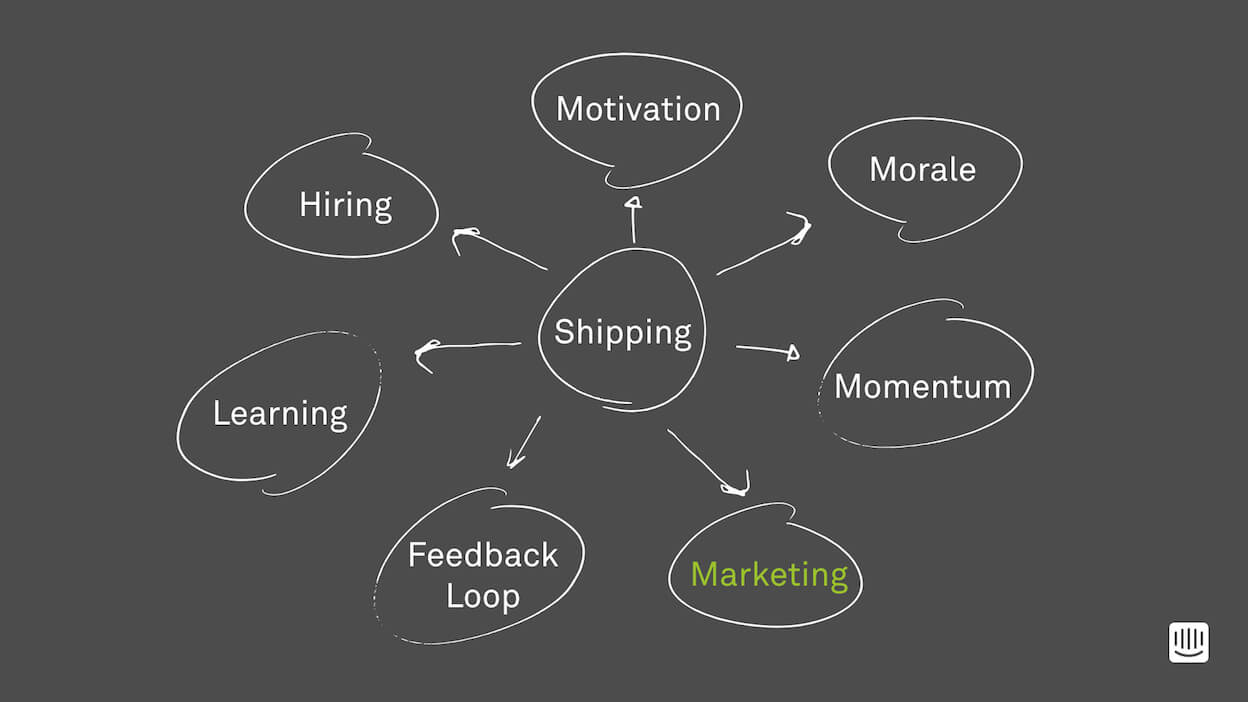
The key word here is opportunity, because having more opportunities presents a challenge in itself. It’s a new challenge brought upon marketers by SaaS.
Endless opportunities = new challenges
Before the days of SaaS, opportunities to make an announcement were typically limited to your product team’s release cycle. As a result, big investments were made in announcing big “dot releases.”
Whether you were announcing version 1.0, 1.1, or 2.0, your challenge was to construct a narrative that made sense and told a compelling story about a collection of new features and improvements that more often than not didn’t quite make sense all together. Product managers were pushing, and at times competing, to get their features out in time before the next “ship” left. At the same time, marketing was desperate to have something to talk about. It’s hardly surprising that the big release rarely offered a clear and logical story.
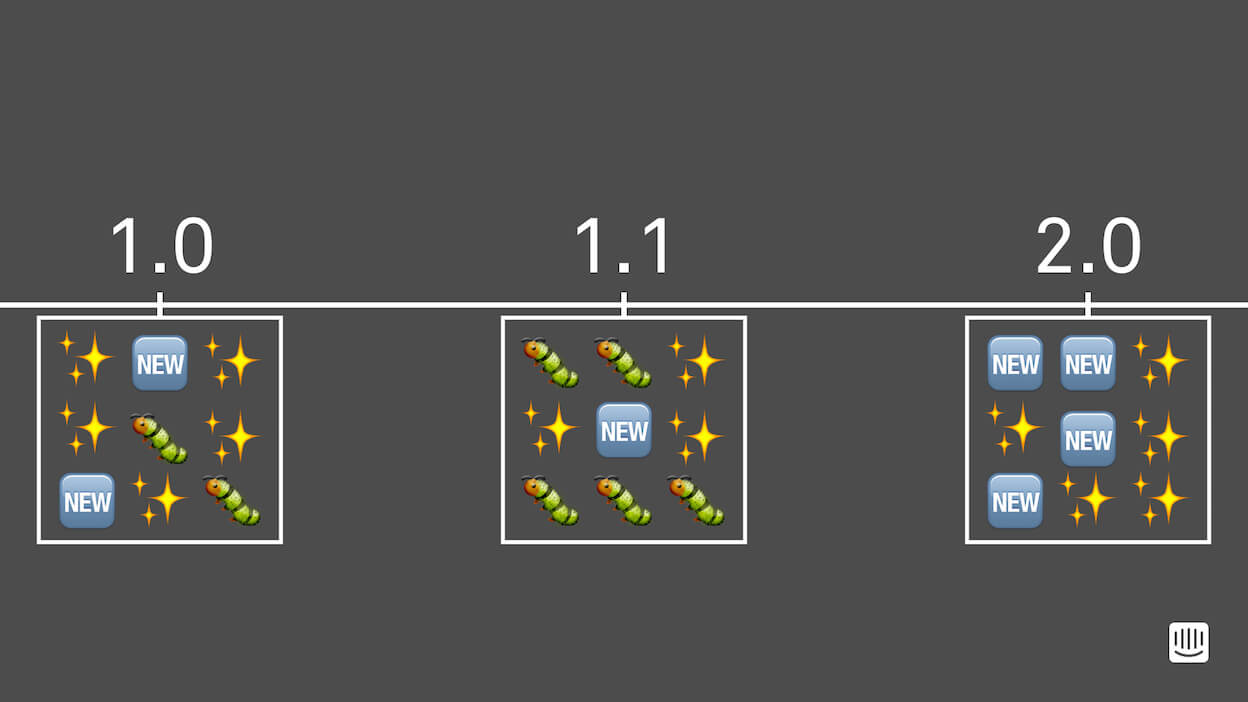
SaaS changed all of this. Although you no longer have to tell all the stories at once, the challenge instead is being thoughtful about the stories you do want to tell.
Deciding what to announce
Last year alone we shipped more than 100 new features and improvements to Intercom. That presented us with more than 100 marketing opportunities. Here’s just a few.
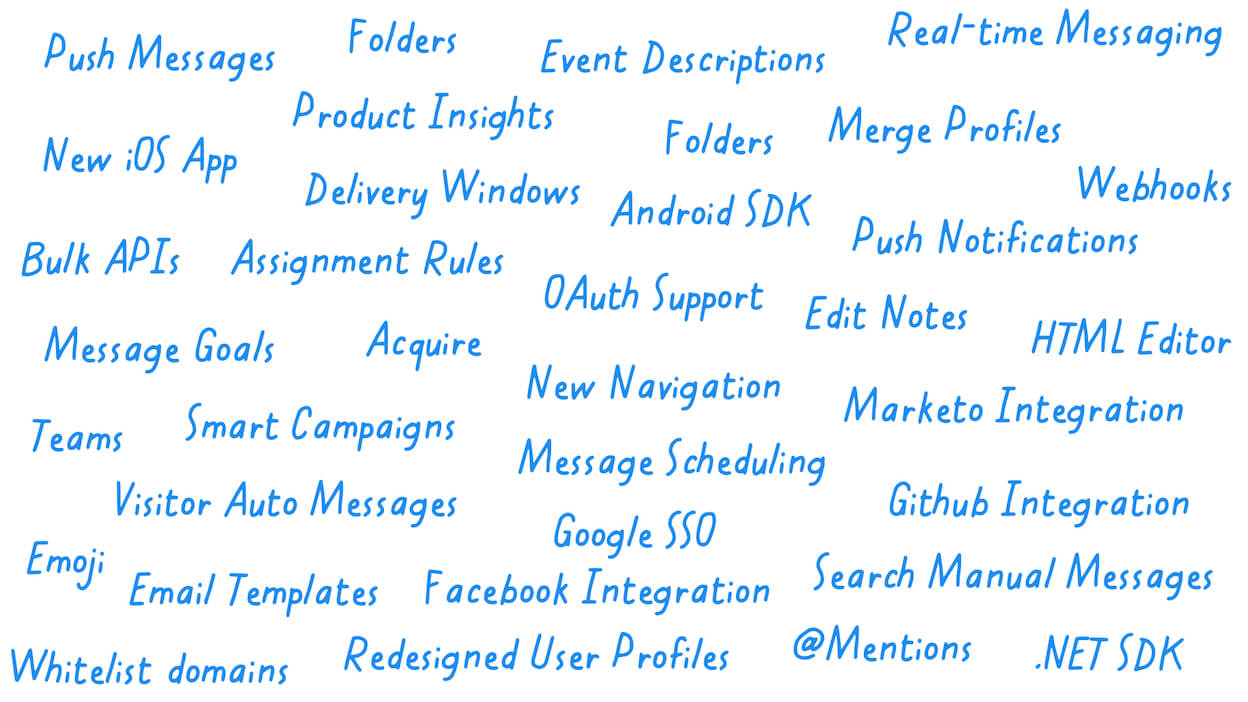
We communicate all these updates and new features via our changes page. It’s an easy way for us to keep people aware of all the extra value we’re adding to Intercom, and do so in a pretty non-interruptive way.
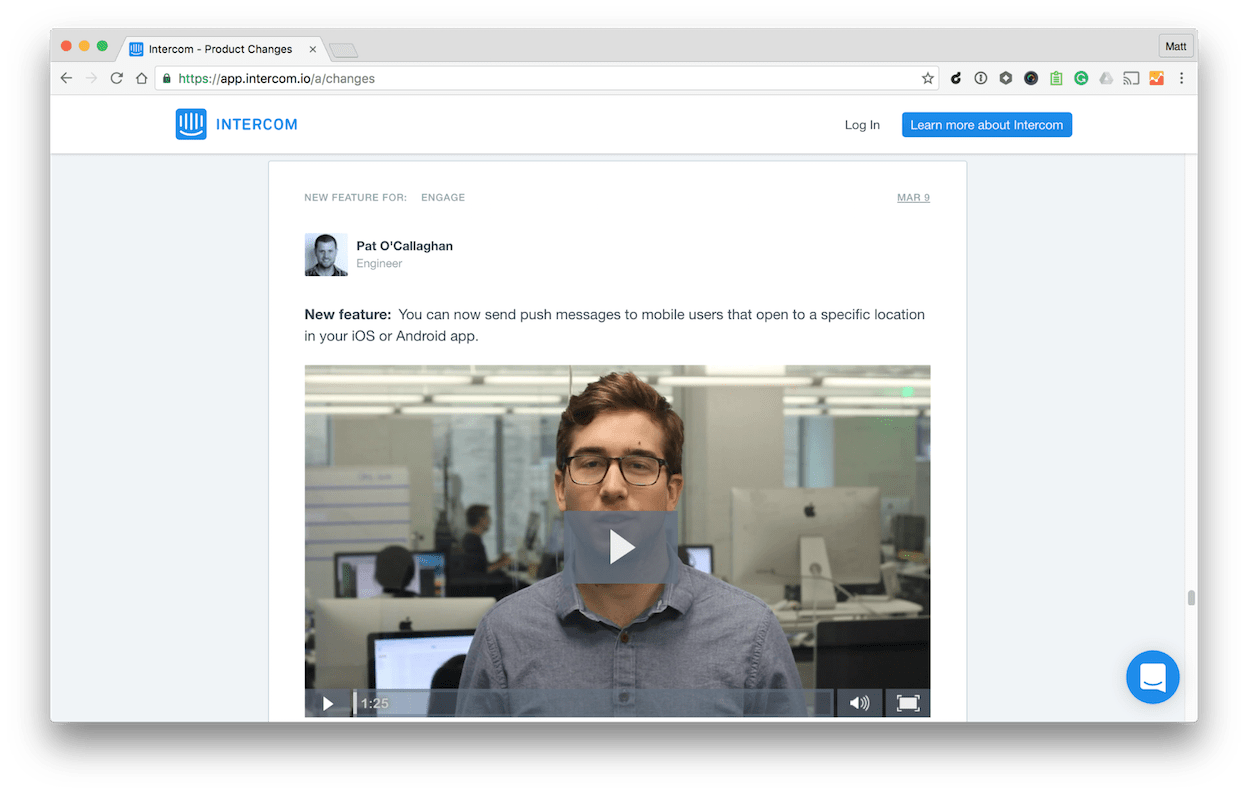
But we know instinctively that a major new feature like Smart Campaigns deserves more attention than something like an integration with a third-party service. If we treated everything equally and tried to shout about each and every thing, people would simply stop listening to us. Just like when your smoke alarm won’t stop beeping, and you take the batteries out to make it stop. It’s a bad idea.
It’s all about prioritization
We’ve created a simple framework to help us to decide what we announce, and how. On one axis you have value – is the change most valuable to existing customers, or does it have the potential to attract new customers? On the other, you have innovation – are you playing catch-up to existing products on the market, or is this an entirely new solution to a problem that people have?
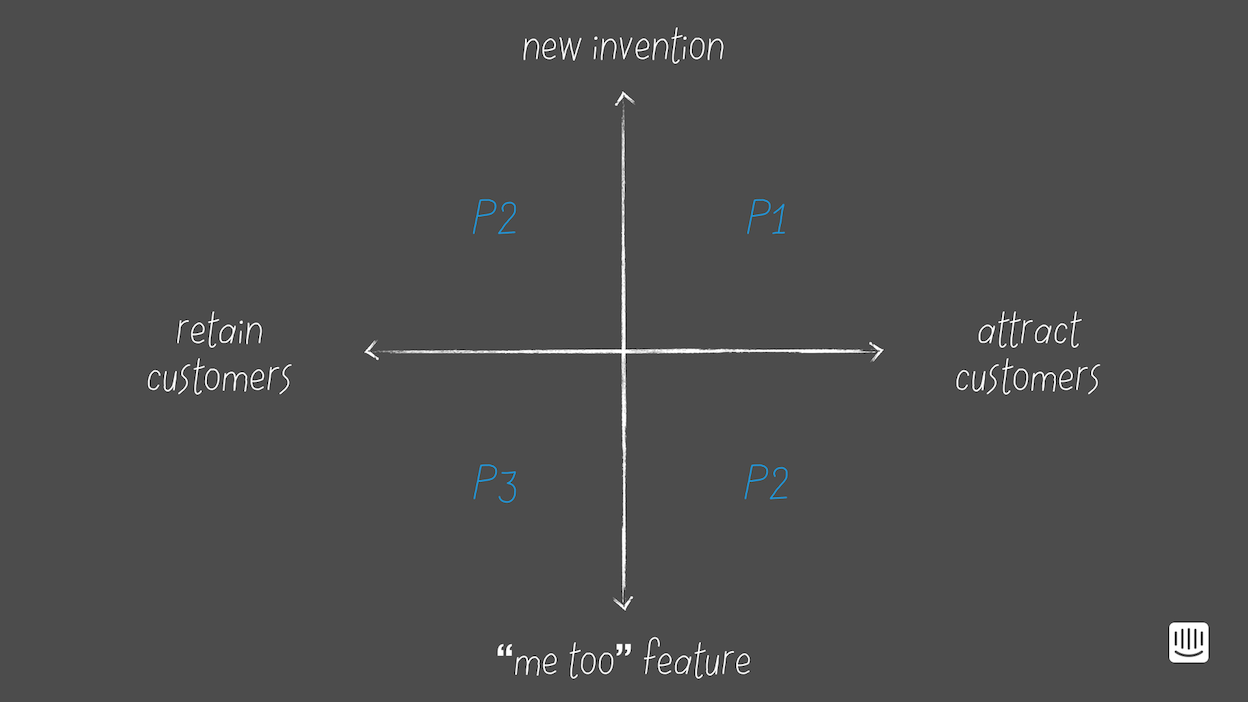
- P1s: These are your big announcements. The new features that solve problems in entirely new and better ways. They present the biggest opportunity for you to attract new customers, so you want to be sure to shout about them.
- P2s: These are new solutions to problems that are mostly valuable to your existing customers. They’re powerful features, but by themselves, they are unlikely to convince a new customer to use your product over an existing solution.
- P3s: These are the things you ship to fill gaps in your product. The new features and improvements that bring your product up to par with competitors. Existing customers have likely been asking for it, but it wasn’t blocking a sale.
There are times when you’ll ship a feature your competitors already have and are blocking prospective customers from using your product. These features present an opportunity to attract new customers, so we treat them as P2s too.
Mapping prioritization to tactics
Understanding the priority of an announcement will help you understand what level of effort and investment you should make in announcing it. For us, we map each priority to a set of tactics.
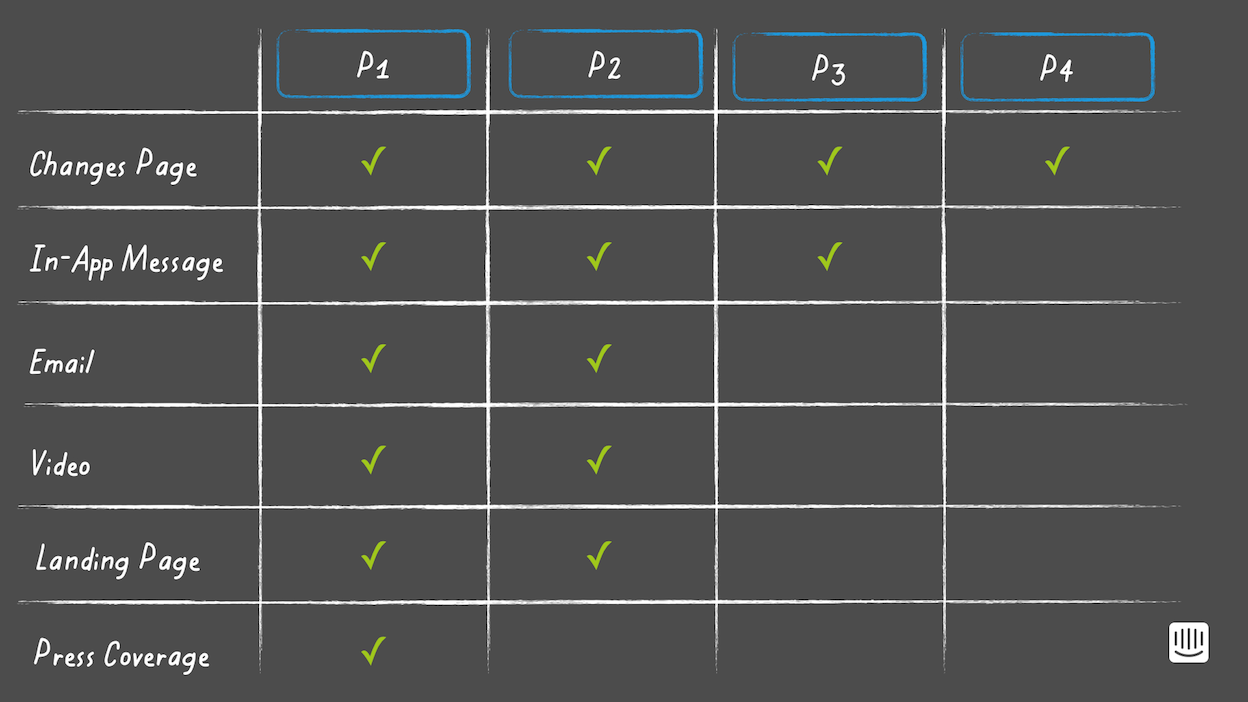
As you can see, everything we announce gets an entry on our product changes page, but we’ll only create landing pages for P1s and P2s, and we only ever pitch the media for our biggest announcements. This is not a complete list of everything we do, but here are a few examples to give you a sense of what tactics we employ and why:
- Changes page: An entry on our public product changes page, a page that’s also quickly accessible inside the Intercom app, is an unintrusive medium for us to communicate all new products, new features, and significant improvements to existing features.
- In-app message: The best way to reach our active users, and do so in a timely, contextually relevant way is to send a targeted in-app message. For example, when we released Assignment Rules, a new feature for our Resolve product, it was easy for us to message users who actually had access to the feature. Additionally, we were able to further refine that audience to those users who most likely had the need for the feature based on the volume of conversations they were responding to in Intercom and number of teammates they had.
- Email: We still find email to be the most efficient medium to reach inactive users. However, we use it sparingly and only ever email people about our biggest announcements.
- Video: “Show, don’t tell” is particularly crucial when marketing novel software. It’s a much more efficient way to communicate what a new product does than relying purely on text or a bulleted list of features. Producing quality videos can be a serious investment of time, so we create “quick looks” for our smaller announcements, like this one for Push Notifications – and “hero videos” for our major announcements, like this one for Smart Campaigns.
- Landing Page: When you’re making a big splash about your new product, or a major new feature, it’s crucial you have a destination to point people to learn more. The best landing pages are designed to be evergreen, such that they are both discoverable and relevant to prospective customers even months after you made your announcement. Here’s one we created for our all-new Intercom Messenger.
- Press coverage: We only ever pitch the media for our major announcements when we have the most compelling story to tell and biggest opportunity to generate new demand for Intercom. As an example, it was great to see both Forbes and Fortune cover the recent release of our new Messenger.
There’s no second chance to make a first impression
With any announcement you make, it’s critical that you start by getting your story right. But, that’s a story for another day ;) In the meantime, remember this: the more you shout when you really shouldn’t, the more people will stop listening to you. Don’t be the app that cried wolf.







